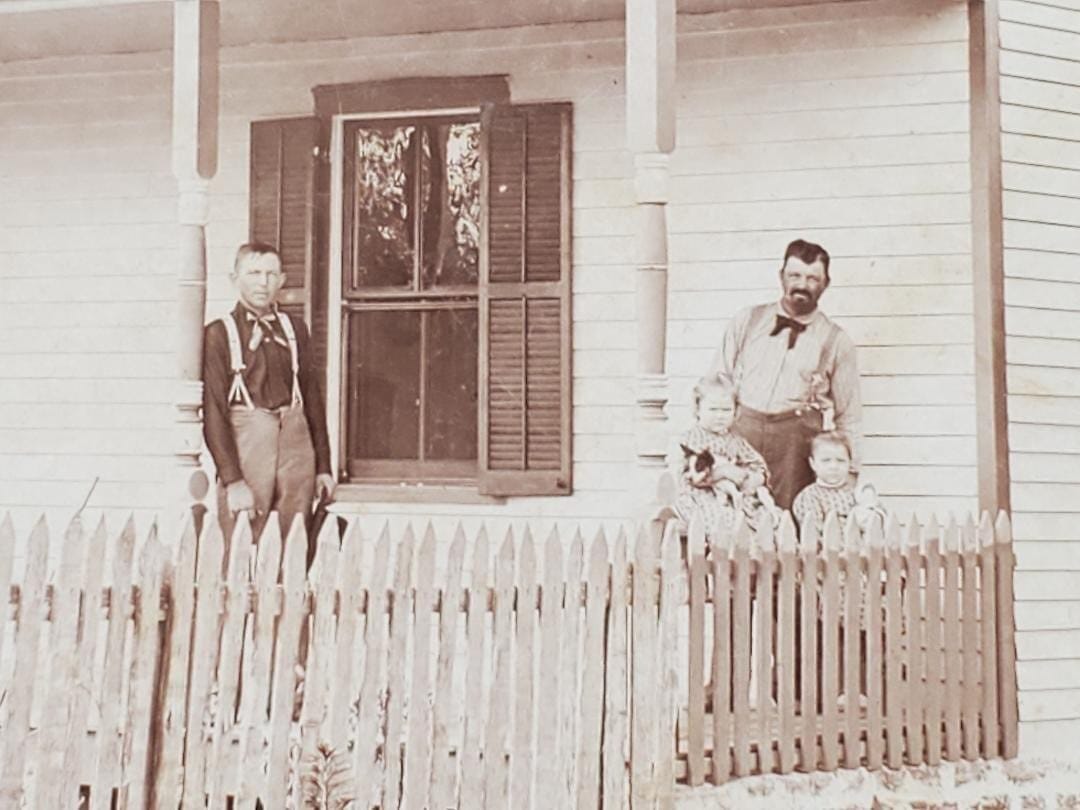We Are All Immigrants
My family story of immigration - We must not dehumanize immigrants - We must not support mass deportations from the Trump administration

What is your family story? Every family has family lore, which includes a beautiful collection of stories retold and passed down from generation to generation.
For my family, it is the story of the journey of my great-grandfather Herman. His journey story is told at every family reunion and goes a little something like this:
In 1889, at age 17, Herman left his home in Northern Germany. He sailed from Germany to America and landed on Ellis Island, the American Immigration Port in New York.
A distant relative met him there and helped put him on a train to St. Louis, where his half-brother Henry picked him up. Henry had immigrated to America several years earlier and settled on a farm in Missouri.
The family story praises Herman and Henry for their bravery as young men who didn’t speak English arriving in a strange country. It speaks highly of their determination to find and make a life in America. Upon his arrival, Henry helped Herman get a job as a farm laborer for a family in a small town in Missouri. Eventually, Herman saved enough money to buy his own farm in Missouri, which is still in the family today.
Herman traveled on this perilous journey across the ocean to find a better life for himself and, eventually, for his family here in the United States.
In 1890, an estimated 2.8 million German-born immigrants lived in the United States. Most were located in the “German triangle,” which had Cincinnati, Milwaukee, and St. Louis as its three points.

Herman’s story often brings to mind the stories of immigrant children coming to the United States at the same age at the southern border, seeking a better life. Like Herman, many of these 17-year-olds also have their relatives’ phone numbers strapped to their arms, signifying the hope of family who has come to America before them.
According to the counsel of foreign relations, “violence, impunity, hunger, climate change, persecution, the economic fallout of the pandemic, and reuniting with family are powerful motivators. They believe the United States is where they will be safe and can prosper if given the chance. And for many, they see no other option.”

Why do we celebrate Herman’s journey to America with just a trunk of his belongings at 17?
Why do we dehumanize those children of the same age coming to the United States now at the Southern Border?
There must be something that makes this distinction.
The only thing I can think of is that these children have brown skin.
Trump has dehumanized these children. The media has enabled him to dehumanize these children.
In my mind, these immigrants face many more challenges as they seek asylum than even my great-grandfather faced. Yet, he is lauded for his bravery—he was a farm laborer who was paid very little at first, which parallels the storyline of many of these immigrants at the Southern Border.
Family separations were a feature of the previous Trump administration, and journalist Jacob Sobroff has written extensively about it in his book Separated: Inside an American Tragedy. The book has been made into a documentary that is also out now, an ominous warning of what will come.
As Trump begins his mass deportation campaign and we are bombarded with the awful scenes at the border, and as the administration and media begin using terms that dehumanize these children and families, let us remember that we may not even be here if not for the courage of similar young immigrants who undertook a perilous journey to come to Ellis Island. They were met by the beautiful statue of Lady Liberty and with a welcoming message:
“Not like the brazen giant of Greek fame,
With conquering limbs astride from land to land;
Here at our sea-washed, sunset gates shall stand
A mighty woman with a torch whose flame
Is the imprisoned lightning, and her name
Mother of Exiles. From her beacon-hand
Glows worldwide welcome; her mild eyes command
The air-bridged harbor that twin cities frame.
"Keep, ancient lands, your storied pomp!” cries she
With silent lips. “Give me your tired, your poor,
Your huddled masses yearning to breathe free,
The wretched refuse of your teeming shore.
Send these, the homeless, tempest-tost to me,
I lift my lamp beside the golden door!”
Facts about Immigration
Immigrants help the economy. According to an American Immigration Council analysis of U.S. Census Bureau data, immigrants — almost 48 million of whom now live in the United States among an overall population of roughly 335 million people — generated some $1.6 trillion in economic activity in 2022, the most recent year for which such data is available.
Immigrants have contributed over $579 billion in local, state, and federal taxes. The nonpartisan Congressional Budget Office estimates [PDF] that increased immigration could reduce the U.S. federal budget deficit by some $897 billion over the next decade.
Immigrants contribute to the U.S. economy in many ways. They work at high rates and make up more than a third of the workforce in some industries. Their geographic mobility helps local economies respond to worker shortages, smoothing out bumps that could otherwise weaken the economy.
Immigrant workers help support the aging native-born population, increasing the number of workers compared to retirees and bolstering the Social Security and Medicare trust funds. Children born to immigrant families are upwardly mobile, promising future benefits to their families and the U.S. economy.
To be sure, immigrants contribute to our communities in ways that go far beyond their economic impacts. Immigration can lead to increased tolerance and acceptance of different cultures.
Exposure to diverse practices and traditions can help to break down ethnic barriers and promote greater understanding. This can help to create a more inclusive and tolerant community where individuals are more accepting of different ethnic practices and beliefs.
Immigration can lead to a cultural exchange, where immigrants bring their ethnic practices and traditions to their new homes. This can help to enrich the ethnic landscape and foster a greater appreciation for diversity.
Immigrants can introduce new foods, music, dance, and art to their new community, which can help to break down ethnic barriers and promote cross-cultural understanding.
When did this message change?
When did this message become subject to interpretation?
Where did this hatred come from?
During the 2024 campaign, Trump used dehumanizing language to describe immigrants of all kinds. Historically, immigrants, as a group, have been frequently described in ways, such as vermin or disease, that portray them as less than human.
This type of dehumanizing language leads to negative emotional responses and negative attitudes toward the dehumanized group. The role of emotion enflames negative attitudes. Dehumanization increases anger and disgust toward immigrants, which causes anti-immigrant sentiment.
I feel a kinship with these children traveling to find a better life like my great-grandfather did. I listen to their stories of their journey and wish for a better life for them.
America should celebrate immigrants’ humanity and journey like my family does in the story of Herman instead of demonizing them.
*This is in no way meant to diminish the Native American experience or what they went through as colonizers took over their land. I recognize that atrocity as well.



Michelle- I appreciate this article. Particularly the insights and story on Herman and the farm. Great reminder.
Great article about immigration! Thank you!